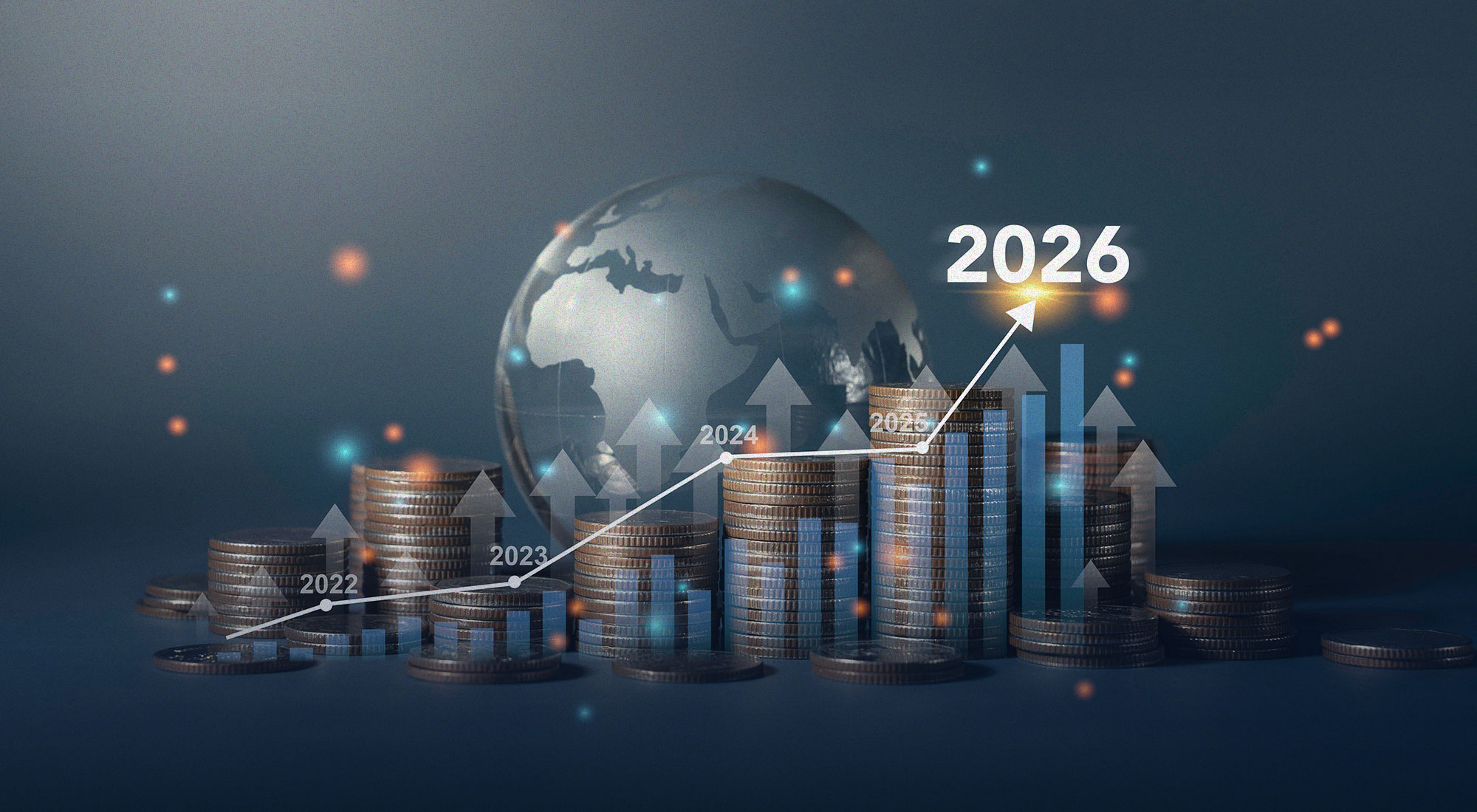Introduction
The initial
definition of the sharing economy[1]
is an economic model that relies on individuals sharing their assets with
consumers who need them in exchange for a fee (known as “peer to peer”) or individuals
sharing each other’s assets to create a socio-economic system that fulfills
their needs for products and services. Thus, the “sharing economy” refers to
the sharing by individuals of material assets and their untapped human
experiences, either directly or through modern technology available through
websites and mobile applications, which is the new active element in
communication between participants in the exchange of products and services.
Figure 1: Managing the Sharing
Economy
What is sharing economy[2]?
The sharing
economy is a new economic trend that can be looked like business-to-business
“B2B” model. The idea of the sharing economy is how both the owner of products
and services and the user of such assets and services come to deal with each
other in direct terms.
The main
understanding of this definition is that there is a timely need for such
ownership from both the owner and the user. For example, if I have a car, I do
not need it all the time, so I can lease it to someone who does. It is a very
simple transaction between two parties of the social and economic societies
inner or external to one country’s destination. Uber, like business providers, is
a great example of this sharing transaction.
Figure 2: Types of sharing economy
Parag Diwan[3]
in his article “Digital Economy — Pivotal Role of Shared Economy,” has defined
shared economy: “Sharing economy is defined as an economic system in which
assets and services are shared between private individuals. It is used as an
umbrella term for many different services, apps, and products. Wikipedia, for
instance, came about as a platform where users could voluntarily contribute and
share knowledge”.
To follow Diwan’s
vision of the various definitions of the sharing economy through a search on the
net and Wikipedia, what is the sharing economy, we will find many definitions:
1-
“The sharing
economy is based on pooling and exchanging services, resources, goods, time,
knowledge, and skills. Moreover, the sharing economy’s quick development is
straightly connected to the development of the internet and technology.”
2-
“An economic
system in which assets or services are shared between private individuals,
either free or for a fee, typically by means of the internet.” “Thanks to the
sharing economy you can easily rent out your car, your apartment, your bike,
even your Wi-Fi network when you don’t need it.”
3-
In
capitalism, the sharing economy is a socio-economic system built around the
sharing of resources. It often involves a way of purchasing goods and services
that differs from the traditional business model of companies hiring employees
to produce products to sell to consumers.
4-
The sharing
economy is estimated to grow from $14 billion in 2014 to $335 billion by 2025[4].
This estimate is based on the rapid growth of Uber and Airbnb, which is
indicative.
5-
Sharing
economies allow individuals and groups to make money from underused assets. In
a sharing economy, idle assets such as parked cars and spare bedrooms can be
rented out when not in use. In this way, physical assets are shared as services.
Examples of the sharing economy[5]
• Peer-to-Peer Lending
• Crowdfunding
• Apartment/House Renting and Couchsurfing
• Ridesharing and Carsharing
• Coworking
• Reselling and Trading
• Knowledge and Talent-Sharing
• Niche Services
The term
“sharing economy” began to appear around the time of the Great
Recession, enabling social technologies and an increasing sense of urgency
around global population growth and resource depletion. In fact, such
definitions, although they are right, don’t give a deep understanding and
comprehensive meaning of the sharing economy. The question now is: can the share
economy compete and replace capitalism, communism and socialism methodologies
or not?
Sharing
economy concept
There is a
similarity between the sharing economy and the barter system in the case of the
exchange of goods and services between the two parties to the relationship.
However, it differs from the concept of barter in the case where the exchange
of goods and services is for a material consideration. What is new in the
sharing economy is that the two elements of exchanging goods and services for
owned assets and time, if they are available to the owner, using modern
technology, and conducting the exchange process through electronic platforms,
or what is known as the “platform”.
The sharing
economy also replaced the concept of the traditional broker in communication
between the service owner and the consumer with the concept of the operations
manager through electronic platforms. Sharing economy businesses will grow by a
staggering 2,133% in just 12 years, and Over
86 million Americans will use the sharing economy by 2021 [6].
Figure 3: Sharing economy evolution
The Business Model
Toolbox identified the sharing economy concept as “Private customers share
access to products or services with other private customers – a platform serves
as intermediary”.[7]
Sharing economy methodology
The sharing
economy aims to develop a partnership by using the economic resources available
to individuals and organizations and marketing them directly and accurately to
achieve a comparative advantage for both sides of the economic relationship.
Examples of sharing economy activities are Airbnb renting (sharing rooms and
apartments around the world), the Uber car rental system, as well as education
web and mobile apps. Given the importance of the growing role of sharing
economy products and services, the sharing economy has become a major part of
the global economy, which has presented many unexpected challenges to
consumers, established companies, regulators and policymakers.
Figure 4: Sharing economy placement
In his
analysis of the sharing economy methodology, Koen Franken,
in his article “Putting the sharing economy into
perspective,” which was published in Environmental Innovation and Societal
Transitions[8],
defined that the sharing economy can be distinguished from three other types of
platforms that are sharing economy examples pre-dating the Internet. In Figure 4 above, the sharing economy is placed in the
center as it adheres to the three defining characteristics:
consumer-to-consumer interaction (c2c), temporary access, and physical goods.
Sharing economy segmentation
The sharing
economy belongs to the microeconomic segment, where it represents the behavior
and actions of the owner of the product or service and consumers during making
decisions related to the allocation of owned resources and the required pricing
processes. If we agree that macroeconomics looks at the economy in its broadest
sense, as it deals with issues such as interest rates, gross domestic product
(GDP), unemployment rates, and other topics that everyone reads on the pages of
economic newspapers, then the results drawn from the sharing economy operations
will be part of the components of the macro economy.
Figure 5: Sharing economy segmentation
Shareable[9]
net identified that sharing economy growth and movement are evolving quickly
and in many directions. The growth of platform and worker co-ops, increased
awareness of the commons, the evolution of coworking, an explosion of
tech-enabled sharing services, and more are opening promising if not
challenging frontiers.
Sharing economy process and sustainability
The supply
and demand processes in the sharing economy affect the typical traditional
economic system in the provision of products and services through private
sector companies or the government. Thus, they affect prices in a completely
competitive market, as the use of products and services that did not enter
competition previously because they did not enter the labor market may have a
positive impact on achieving the hypothesis of scarcity and providing the offer
in a fully competitive market. It can be explained how to influence the
competitive market simply by saying that the operations of the sharing economy
led to an increase in supply, which then led to the inevitability of lower
prices. The sharing economy creates new dimensions for goods and services,
which may lead to a change in the consumption pattern as well as promote the
sustainability of the sharing economy process.
According to Zhifu
Mi & D’Maris Coffman, sharing economy promotes sustainable societies: “A
simultaneous improvement in both ecological and economic efficiency is
necessary to achieve the Sustainable Development Goals (SDGs). The new sharing
economy has potential to promote the needed shifts in collective consumption
behavior, but better governance models are urgently required.”[10]
Implications of sharing economy on society[11]
The sharing
economy has experienced an intensive process of expansion, mainly in certain
tourism and transport services, by renting household durables stock excess
capacity. Technological progress and the development of Information and
Communication Technologies (ICTs) have removed barriers to market access and
information constraints, which provide households with a marketplace to rent
goods and services produced by using household capital.
The
production within the sharing economy falls between market production and
domestic production and combines some features of both environments, but
customers in others.
Figure 6: Impact of sharing economy on society
According to Putu
Dinah,[12]
“Information and communications technologies have enabled the rise of the
collaborative consumption or know as the sharing economy. This collaboration
enables the peer-to-peer-based activity of obtaining, giving, and sharing the
access to goods and services, coordinated through internet-based services.”
A positive
neutral technological shock to market production has a positive impact on the
accumulation of durable goods, consistent with the data. By contrast, a
positive productivity shock to the sharing economy sector reduces durables
investment and increases business capital investment. Finally, technological
shock to durables has a positive effect on household capital but a negative one
on business capital.
Amani Zaher, in
her article, “The sharing economy opens up new prospects for growth” in Amal
electronic magazine[13]
pointed out that individuals can present their experiences and transfer their
‘non-used items’ to others through a specialized website for a specified amount
of money, in addition to the possibility of exploiting the individual’s talent
in their spare time, so that the individual who has a talent in cooking, for
example, can host individuals in their home to create a new alternative for
individuals instead of the traditional form known as going to the restaurant.
Dr. Aaron
Sander Jan,[14]
Professor and Doctor of Administrative Sciences and Digital Economics at New
York University’s Stern School of Business, concluded that the remarkable
progress in technology has created fundamental changes in the shape of the
economy to show a new pattern that was not available before, namely, the
sharing economy, which opens new horizons for the growth of the global economy.
It contributed to creating new markets and diversifying the alternatives and
choices available to individuals.
Sharing economy and economic theories
An important element when discussing
the sharing economy is the service provider’s thinking of the opportunity cost
of doing such an activity. The person tends to measure the value of that
activity compared to other alternatives, which is called the opportunity cost.
This person should have earned more from that project than he gave up. The
questions that arise are: what is the sharing economy, and can it be part of
the state economy? Is the sharing economy part of the capitalist
economy or part of the socialist economy?
Sharing economy and capitalism[15]
In capitalism, the sharing economy is
a socio-economic system built around the sharing of resources. It often
involves a way of purchasing goods and services that differs from the
traditional business model of companies hiring employees to produce products to
sell to consumers.
Capitalism views the sharing economy
as a qualitative transformation in the form of the relationship between the
owner of the service and the commodity and the consumer of it. The sharing
economy system does not depend on the presence of employees to perform the
service, the process of exchanging goods and services is done through social
media or electronic applications. The commonalities of this growing sector have
helped startups like Uber succeed and solidify engagement as an essential
aspect of boosting the future economy.
Three important elements link the
capitalist concept of exchange of goods and services to a sharing economy:
scale, access, and trust. A platform brings together owners and
seekers and facilitates all processes between them.[16]
o Scope:
Connecting customers with owners of services and products. It is the backbone
of any business.
o Communication:
The possibility of smooth and effective communication between service providers
and consumers in a work system that achieves possibility and transparency while
reducing risks at the same time.
o Trust:
The process of exchanging goods and services between the owner and the user is
based on the concept of trust in the owner and provider of the service, which
is built using the elements of insurance, guarantees, marketing, and finally
the opinions of users about the service providers.
By analyzing the work system on which
the sharing economy depends in the
interaction between the owner and service provider “supply” and the consumer
“demand”, we note that some of the capitalist economies basically have two
parties to the contractual relationship (“supply and demand”) in addition to
the profit motive and competition. The ability to adapt is where the sharing
economy is characterized by its ability to meet supply/demand needs in a timely
manner and the ability to adapt to continue to meet increasing needs. The
sharing economy is also characterized by reliance on improving supply and
demand opportunities.
Sharing economy from the macroeconomic perspective
From the macroeconomic point of view,[17]
the rapid expansion of the sharing economy, the diversity of micro and
accelerating supply and demand processes, as well as the heterogeneity of
resources and needs make it difficult to predict the movements of supply and
demand due to the acceleration of the relationship between supply and demand,
which makes it difficult to achieve effective matching between service
providers and customers in an increasingly complex market. This makes the
growth of electronic applications to bridge the gaps between supply and demand
processes and achieve the appropriate level required for the services provided,
one of the deeply distinctive characteristics of the sharing economy.
Figure 7: Sharing
economy circulation
Sharing economy from a socialistic perspective
One of the most important elements of
the success of the sharing economy is the ability to find solutions to many
societal problems through the concept of participation, which is represented in
the presence of idle and unused energy in many possessions at the same time as
there is a demand for the consumption of those properties in a new way.
According to this view, the sharing economy represents a developed
socio-economic model that addresses the new global requirements after the
Covid-19 pandemic. Research on the effect of Covid-19 on sharing economic
activities has examined the effect of Covid-19 on sharing economy activities
with an objective of paving avenues for future research.[18]
When the public or government sector
assumes the role of customer or service provider in a sharing economy, it is
necessary to understand the mechanisms of co-production of those public
services with external stakeholders that may affect the sovereign validity and
continuity of the economy-based allocation of public goods.
Undoubtedly, dependence on a third
party requires governments to abandon their monopoly on providing services and
increase their dependence on the behavior of third parties. The adoption of
sharing economy applications in the public sector may require a cultural shift
as governments need to accept the idea of low ownership. A shift in roles
when the public sector is a customer in a sharing economy exchange can result
in a changing understanding of the public sector itself among citizens and
other stakeholders and will raise questions in the future about why the public
sector is needed if the private sector provides most of the services.
Regarding the role of the service
provider, such forms of public-private partnerships based on applications of
the sharing economy are unprecedented, and we must understand how these towers
affect both public values and their actions.
An important example of the possible
changes in the role of the public and government sectors in providing public
services to civil society through the concepts of the sharing economy is for
the state to offer public entertainment areas for the participation of the
residents of the area in which they live to invest in the form of shares to
develop and operate those services, such as parks, cafes, play areas, and so
on. This will lead to the transformation of the government sector and the
public sector from a provider or user of the service to a manager of that
relationship, allowing all parties to benefit and increase productivity.
One of the important pillars of the sharing
economy is the inclusion of the concept of the socio-economic family
institution and its consequences as part of the components of the overall
economy. The partnership between the husband and wife to establish an economic
family institution, results from cooperation activities as well as their
participation in business processes relating to demand for products and
services and delivery to potential customers. “Children may be the potential
customer for the family” is a definition that includes the concepts of
value-added for non-working women in the family, who are not less important
than the role of the man who works to establish the economic and social
stability of the family, as well as the participation of both the husband and
wife in the creation of wealth for the family institution, which allows at a
later stage the use of that wealth for consumption or investment.
From traditional
microeconomic to sharing economy microeconomic
The essential question is whether the
sharing economy depends on human nature as a basis for realizing the concept of
partnership in business operations from the microeconomic perspective;
companies have the assets and resources they need to continue their activities.
Recently, individuals have been able to lead the scene. In 2009, Travis
Kalanick and Garrett Camp created the Uber company,[19]
and the idea of Uber itself is considered a pioneering at its time, as it was
possible to provide the service of finding a means of transportation by
pressing only one button, and through this click, the car will reach you at
anytime and anywhere. Thus it changes the meaning of Taxi transportation completely,
with the Uber company now serving in more than 75 countries and nearly 459
cities and its value reaching about 60 billion dollars.
BOT concept and sharing economy
One of the significant issues in the
sharing economy is to expand the scope of the definition to include all small
and medium operations in which the two parties to the relationship share a
common interest. For example, the state’s tendency to finance its national
projects under the BOT system can be seen from the larger definition of the sharing economy, where the two parties to a
beneficial relationship share the one who has the experience and knowledge and
the one who has the desire to use it with time participation after which the
ownership is transferred completely, including the experience and technical knowhow
necessary to operate the project in full.
Financial operations and sharing economy[20]
One of the significant questions that
needs to be discussed in depth is: what is the possible impact on the financial
sector of the increase in sharing economy operations? Does the typical financial
system need to make fundamental changes to interact and comply with the growing
requirements of the sharing economy? The answer to this question is that the sharing
economy fundamentally contradicts the idea of financial deposit and lending,
which represent typical operations in banks, where stakeholders tend to
interact directly to implement sales and purchases of products and services.
Islamic banks and sharing banks represent the vision of the “financial system
and the sharing economy” and its potential to contribute to achieving the
dimensions of economic and social development at the macro level.
The financial target of the sharing
economy can be defined as a financial model that provides financial services in
the field of money management and does not lend to implement projects. The
methods to be used, based on the principles of interest-free financial system.
The process of investing in the
purchase of shares and bonds for new projects in the stock exchanges is a significant
part of the applications of the sharing economy. Investors are looking for
safer places to invest their money. It is interesting to note that there are companies
like Uber which have been referred to as representatives of the sharing economy.
According to PricewaterhouseCoopers
(PwC),[21]
the sharing economy giants could reach $335 billion in revenue by 2025.
However, the addition of sharing banks and the issuance processes witnessed by
the global banking markets every day, and the development taking place in them,
indicate a weakening of those numbers projected by the PwC analysis. PwC
expects the sharing economy to grow at more than 30% annually, with growth
spread broadly across the five major sharing economy sectors: automotive,
hospitality, finance, employment, and media.
Conclusion
The
efficiency in the use of resources is very significant in any economy. Here are
some principles of the sharing economy:
·
Parties’
trust in each other: The trust of each of the service provider in completing
the process of paying the value of the service or product for payment, as well
as the consumer’s confidence that the supplier will deliver what was fully
agreed upon. Any inequity in this trust or non-compliance with it from either
party, will lead to the failure of the exchange or transaction between them and
will lead to the failure of operations for the supplier as the consumer will
put in the satisfaction survey his lack of confidence in the supplier.
·
Utility and
preserving the value of resources: The consumer is no longer focused on looking
for goods that he can afford to buy, but rather on the commodity that can
achieve his temporary ownership “time use when needed” where the value of the
thing is more useful and the value of the time of need. On the other hand, the desire
of the owner to maximise the benefits of the good or service he owns when he
does not need it, “the optimum use of resources”. This is because if they are
to be used for the highest possible value from that resource, “unused resources
= wasted resources”.
·
Transparency
and openness: This mainly refers to sharing information to enable users to
access resources, allowing for more possibilities for linking between service
providers and consumers.
·
Joint
investments: The sharing economy or the economy based on participation and
sharing of resources on a productive basis continues to sweep the world in
return for the decline of several economic concepts that were based on
ideological foundations, such as the well-known capitalism.
·
Risk-sharing
has led to a creative economy that depends on investment in the intellectual
and industrial production of society without excessive protection of capital,
such as investing in sharing and technical applications companies and medicines
that depend on intellectual production and research and development, especially
that many of the investments that were invested in research and development
were not guaranteed results, but the sharing economy led to impressive results
for economic policy makers.
·
To benefit
from talent or experience: The idea of the sharing economy did not stop at
the exploitation of material assets alone, but extended to the possibility of
exploiting the experiences and talents of individuals, so that a person who is
an expert in certain areas can present his experiences and transfer them to
others through a specialized website for a specified amount of money. In addition
to the possibility of exploiting the individual’s talent in his spare time, the
individual who has a talent for cooking, for example, can host individuals in
his home to create a new alternative for individuals instead of the traditional
form known as going to the restaurant.
The sharing
economy concept has five main elements:
·
Create an
added value for the good or service
·
Characterization
and identification of unutilized assets
·
Online
communication to exchange goods and services
·
Meeting the
growing needs of society in a modern and effective way
·
Decreased
need for ownership of goods and services, even if temporarily
The sharing
economy appears when two important barriers that have dominated the consumption
pattern of individuals in the global economy are broken, and they are the
intense desire of individuals to own things such as real estate, cars and
electronics, while the second factor is the dominance of major companies and
prominent brand owners on most commercial transactions with individuals.
·
The sharing
economy is expected to revolutionize the global economic landscape.
·
The sharing
economy aims to provide a profit using the untapped resources, which reduces
the cost and distribution price, and provides alternative job opportunities in
countries with high unemployment rates.
The sharing
economy has many advantages.
·
Based on
electronic interaction and is driven by demand.
·
Associated
with the reuse of unused assets through sales and the use of online
marketplaces
·
Play a large
and vital role in the development of societies
·
Help in
overcoming many social and economic challenges
·
Maximizing
the use of public facilities for the benefit of the community
·
Improving
safety in relation to business: Various retailing
·
Create
harmony in neighborhoods, bringing about positive change or in preventing
poverty in rural villages.
Despite
the difficulty of measuring the impact of the participatory economy and the
difference in many of the concepts put forward by researchers due to its
modernity, there are a number of financial fundamentals provided by this system
that reflect positively on the growth and activity of global financial systems,
most notably the low transaction cost, or what is known as “transaction cost”, which
enhances the increase in transactions and contributes to the revitalization of
the economy.
The
process of optimizing the resources available to individuals and improving
their income level is one of the most important advantages of the new system,
as is the ability to create new non-typical jobs that do not require precise
specializations that are difficult to obtain, which positively affects their
lifestyle and consumption. The sharing economy provides a diversity of
opportunities available to individuals without being limited to limited and
expensive options.
[1] “The sharing economy: Definition, examples and advantages,” Climate
Consulting, https://climate.selectra.com
[2] The Investopedia team, “Sharing Economy,” October 3, 2020, http://bitly.ws/RS9j.
[3] Parag Diwan, “Digital Economy — Pivotal Role of Shared Economy,” April
9, 2021, http://bitly.ws/RWIH.
[4] Niam Yaraghi and Shamika Ravi, “The Current and Future State of the
Sharing Economy,” 2017 Brookings India, http://bitly.ws/RWNS.
[5] Manu Raj Jain, “What is the Shared Economy? Definition, Types,
and Examples,” December 30, 2021.
[6] Christo Petrov, “25+ Sharing Economy Statistics to Share in 2023,” http://bitly.ws/RSk5.
[7] Business Model Toolbox, “Sharing Economy,” https://bmtoolbox.net/patterns/sharing-economy/
[8] Koen Franken, “Putting the sharing economy into perspective” Environmental
Innovation and Societal Transitions 23, June 2017, pp. 3-10, http://bitly.ws/RWK6.
[9] “The Top 10 Sharing Economy Predictions for 2016, by the Experts,” Shareable,
January 21, 2016, http://bitly.ws/RSnJ.
[10] Zhifu Mi & D’Maris Coffman, “The sharing economy promotes
sustainable societies,” Nature Communications 10, 2019, http://bitly.ws/RSqr.
[11] Putu Dinah Sastri Pitanatri, Politeknik
Pariwisata Bali, “THE SHARING ECONOMY IN CREATING LOCAL BUSINESS SUSTAINABILITY
FOR TOURISM DEVELOPMENT IN BALI,” November 2016, Conference: Tourism and Events
International Seminar (TEIS) 2017 At: Politeknik Negeri Bali
[12] Ibid.
[13] Amani
Zaher, “The sharing economy opens new avenues for
growth,” (Arabic version), Amal electronic news magazine, November 14,
2020.
[14] Ibid.
[15]Sharing economy, https://en.wikipedia.org/wiki/Sharing economy.
[16] Business Model Toolbox, “Sharing Economy,” op. cit.
[17] José M. Ordóñez-de-Haro and José L. Torres, “Sharing Economy in
Macroeconomics: Collaborative Consumption and Durable Goods,” Málaga
Economic Theory Research Center, WP 2019-1, April 2019, http://bitly.ws/RSvg.
[18] Mokter Hossain, “The effect of the Covid-19 on sharing economy
activities,” Journal of Cleaner Production 280, Part 1, January 20, 2021,
124782, http://bitly.ws/RWMq.
[19] Dan Blystone, “The History of Uber”, Investopedia, April 18,
2023, http://bitly.ws/RWCs.
[20] Avik Dasgupta, “The Sharing Economy: Creating New Opportunities for
Banks,” Nucleus Software, November 23, 2016.
[21] “Sharing or paring? Growth of the sharing economy,” 2015, http://bitly.ws/RWEQ.








